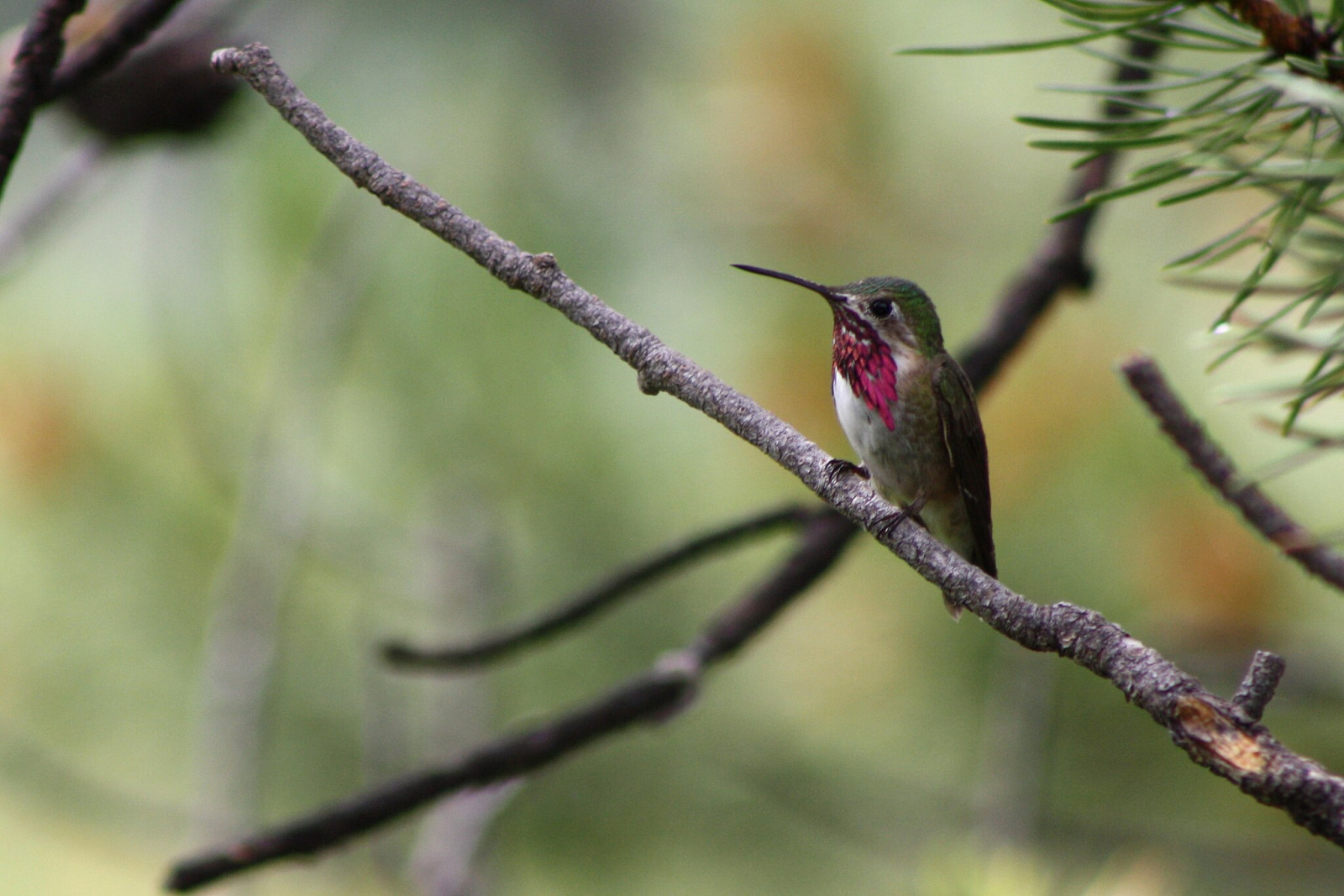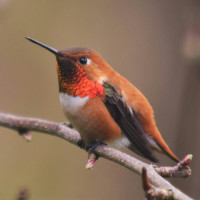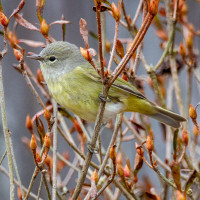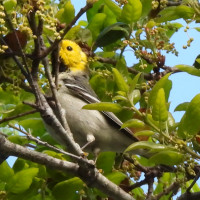Beschreibung
The Mitchell Canyon road accesses oak woodland along a perennial stream, in Mount Diablo State Park. Mount Diablo features mountainous geography, unique geology and plant life, areas of arid semi-desert-like chapparal, combined with oak woodland and riparian habitats, which are all seen in Mitchell Canyon. These features make this an island of biodiversity in the San Francisco Bay Area.
This spot is renowned as one of the best places close to the coast to see migrating interior and montane bird species such as Hammond's Flycatcher, Calliope Hummingbird, Common Poorwill and Hermit Warbler. Chaparral habitat is nearby on the Black Point trail where Calliope Hummingbird and Rufous Hummingbird can be seen visiting blooming sage in Spring. Desert scrub species such as Phainopepla and Bell's Sparrow can be found here - almost uniquely within the Bay Area. In addition to the warblers that winter or breed here, many migrating warblers can be seen in Spring, including Hermit Warbler, MacGillivray's Warbler, Black-throated Gray Warbler, Nashville Warbler and Yellow Warbler. According to eBird, 155 species have been seen in this area.
The unique geography and habitat occasionally also attracts uncommon or rare birds for the area such as Black-chinned Sparrow, Lawrence's Goldfinch, Loggerhead Shrike, Lewis's Woodpecker, Costa's Hummingbird, Prairie Falcon, Canyon Wren, Ferruginous Hawk, Rock Wren, Green-tailed Towhee, Horned Lark, Grey Flycatcher and Dusky Flycatcher.
Details
Zugang
You can drive or bike to the Mitchell Canyon Visitor Center and park here. Click on the P in the map for directions. There is a $ 6 parking fee (2024). The gate opens at 8 AM and closes at sunset. Birding is excellent on foot.
Terrain und Habitat
Wald , Vereinzelte Bäume und Büsche , Schlucht/Cliff , BergBedingungen
Hügelig , Felsig , Trocken , Gebirgig , Offene LandschaftRundweg
JaIst ein Spektiv nützlich?
NeinGute Beobachtungszeit
GanzjährigBeste Beobachtungszeit
Frühjahr , FrühjahrszugRoute
unbefestigte StraßeSchwierigkeitsgrad der Tour
DurchschnittlichErreichbarkeit
zu Fuß , FahrradBeobachtungshütten oder -türme
NeinLinks
- Ebird hotspot info
- Ebird bar charts of species by month
- Link to pdf of Mount Diablo and Mitchell Canyon road and trail map
- Mount Diablo State Park website - with info on conditions, closures, fees and more.




